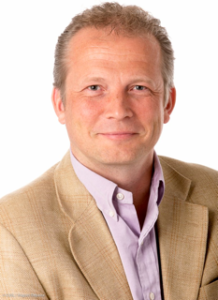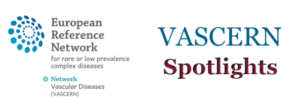VASCERN Spotlights: Professor Miikka Vikkula

This month we interview the Chair of the Vascular Anomalies Working Group (VASCA WG), Professor Miikka Vikkula, a human geneticist from Brussels, Belgium. Prof Vikkula talks about the challenges of working in the rare disease field and the amazing progress that has been made to date in the understanding and treatment of vascular anomalies.
1) What is your medical specialty and what interested you in this field?
I am a human geneticist and I have been interested in genetics since I was in high school. When I started my studies I wondered whether to do biology and genetics or to go into medicine. I decided that there were more applications in medicine and I was very interested in human diseases, so that’s how I got into human genetics. I was interested in cardiovascular medicine in general and I was first exposed to vascular anomalies during my post-doctoral period in Boston at Harvard Medical School. There was a project in the lab involving children with vascular anomalies from the clinic at the Children’s Hospital so I first learned a lot about them there…that was now 25 years ago!
2) How did you become involved in VASCERN?
As soon as we saw the call for the European Reference Networks (ERN), I started to build up a network with several vascular anomaly centers, thinking that we could form a vascular anomaly network. During the process we realized that there was only one network per major theme (vascular diseases) so we joined the VASCERN project, coordinated by Prof Guillaume Jondeau.
3) What is your greatest hope for VASCERN?
My main hope is that VASCERN will improve patient management. I hope 1) that patients will easily find the centers to access proper expertise, 2) that with collaboration between various expert centers we can develop better management guidelines and harmonize the way we treat patients, 3) that we can learn about all of the pathologies (as there are still so many things to be discovered), and 4) that this will allow us to do more clinical research and basic research. All of this will contribute to the goal of better patient management and the development of better therapies for these patients, something that is urgently needed.
4) What challenges do you face as a healthcare professional in the rare disease field?
I think the battle is that as these are rare diseases, they are not well known. The healthcare systems do not realize the special needs required by these patients. The reimbursement codes are made for more common diseases and do not always fit for rare diseases and as nowadays hospitals wish to be more and more cost effective they are often not interested in rare diseases as they view them as not being cost effective. Often these patients require more medical care (e.g. operations and exams) which are not reimbursed in the correct manner in regards to the time and energy that is needed for these patients. It can also be very difficult to receive additional assistance (e.g. nurses, coordinators) for these rare disease centers. Another issue is that we receive many requests from abroad and it is very important to be able to open our centers to these foreign patients and organize that process. But again, as these are rare disease centers, the volume of patients is smaller and we come up against the same administrative and financial hurdles.
5) What have you accomplished in your medical career that you are most proud of?
I think it is the progress in our understanding of vascular anomalies that we have made over the past 20 years. We first identified several genes for inherited forms of vascular anomalies. From those studies we discovered that, in addition to inherited (germinal) mutations, there are also tissue-specific (somatic) secondary mutations in affected families that explain the development of the localized lesions. We then studied tissues of resected vascular lesions in sporadic (non-inherited) patients, which lead us to realize that they also have mutations but that they are only tissue-specific mutations. This opened the door for many teams and labs to study tissue mutations as explanations for the cause of other diseases of yet unknown cause. We were then able to make a mouse model for one of these diseases (venous malformations) and test a medication (sirolimus) and, as it worked in the mouse model, we performed a small clinical pilot study with 6 patients. This demonstrated that this medical therapy could increase the patient’s quality of life. With this discovery we were finally able to come full circle, having started from basic and translational research (to understand the disease) to delivering new therapies to patients, and we are now running larger scale therapeutic trials with this same medication.
6) Are you currently involved in any research projects or clinical trials? If so can you please describe them briefly?
There are various studies currently underway at Cliniques universitaires Saint-Luc- Université Catholique de Louvain that I am involved with, but the largest clinical trial that we are running at the moment is the multicentre VASE (Vascular Anomaly-Sirolimus-Europe) trial, which I touched upon already (see question 5) that involves testing the efficacy and safety of sirolimus in vascular anomalies that are refractory to standard care.
7) What VASCERN activities do you participate in and which are your favourite?
As Chair of the VASCA-WG I am involved in the monthly meetings and participate in the patient discussions. We are trying to enlarge our working group and trying to get each HCP actively involved by leading one of the working group’s projects. I also attend more general VASCERN meetings and try to promote our network at all scientific meetings/congresses that I travel to. From Melbourne to Cincinnati, I always spread the word about the work taking place in Europe, through VASCERN. Patient discussions and hearing the opinions of other experts when examining difficult cases is very enjoyable but I’m sure my favourite activity may evolve as more of our projects progress and as everyone becomes even more strongly involved in these efforts.
8) What challenges does VASCERN still face?
From my point of view, the main challenge that VASCERN faces is to make sure that patients can find and access the expert centers within our network and also to help politicians and healthcare stakeholders to realize the needs of rare disease patients. There is more and more discussion happening around rare diseases, but conversations that will lead to concrete changes in the rare disease nomenclature, and how hospitals finance and manage rare disease care, have not yet taken place, and I think that VASCERN, as a large European network, could play an important role in stimulating these important dialogues.
To learn more about the VASCA WG, including its members and the diseases it covers, click here




